Villa Borghese, what to see: 10 stops in the green heart of Rome
To one of the most important of the families in Rome’s history, the Borghese family, originally from Siena, who counted cardinals, princes and popes, we owe the presence of Villa Borghese, one of the most evocative spaces in today’s super-urbanized Italian capital, which in the magnificence of its more than 80 hectares of parkland encloses museums, art galleries, zoos, ponds, monuments, works of art and a thousand other beauties. It all began when in 1606 Pope Paul V Borghese entrusted his nephew Scipione Caffarelli-Borghese with the task of building in the area where the park stands today an extra-urban residence that would be “a villa of delights”: and so it was. The work lasted 25 years, and in the end Scipione had his residence (today’s Galleria Borghese) and around it the park that later became Villa Borghese, the largest park in central Rome as well as a place of’art, a melting pot of styles (baroque, neoclassical, eclectic) and even innovative solutions, but also a space with a rich concentration of flora and fauna with multiple species of trees and plants and animals, so much so that the first zoo in Italy was created here in 1911. Fountains, water features, Italian and English gardens and free-growing vegetation, and last but not least an area devoted to horse racing: there was room here to give substance to the imagination of architects and planners. To understand its value at a glance, one only has to take a map and see that green heart (literally: the park is shaped like a heart) located in the center of the city. Villa Borghese is all fenced in and has 9 entrances, spread over an area between the section of the Aurelian Walls that joins Porta Pinciana to Piazzale Flaminio, and the new Salario and Pinciano neighborhoods that arose in the early twentieth century. A place where you don’t just take a stroll, you get away from the (far) traffic of the metropolis and immerse yourself in tranquility by being able to pass among statues of Greek gods or busts of historical figures, ancient museums and modern art galleries. Everything could be written about Villa Borghese, and to visit it all would perhaps not be enough one day. But let’s try it for 10 places.
1. The Borghese Gallery
The Borghese Gallery is a state museum based in the main building that gives the entire complex its name. The building was built in the early 17th century to house the rich collection of Cardinal Scipione Borghese, designed by Flaminio Ponzio and completed by Giovanni Vasanzio. It is now one of Italy’s major cultural sites inside which one can admire works by Gian Lorenzo Bernini, Agnolo Bronzino, Antonio Canova, Caravaggio, Raphael, Perugino, Lorenzo Lotto, Antonello da Messina, Lucas Cranach, Annibale Carracci, Pieter Paul Rubens, Bellini, and Titian. In a path of 20 themed rooms we enter admiring the sculpture-portrait of Pauline Bonaparte Borghese in the guise of Venus created by Antonio Canova: certainly the most famous work in the Collection. Inside we also find, for example, masterpieces such as Bernini’s The Rape of Proserpine, Caravaggio’sSelf-Portrait as Bacchus, Raphael’s Lady with Unicorn, Correggio’s Danae, andTitian’s Amorsacro e Amor profano . Canvases and sculptures, frescoes and furnishings that make a splendid setting for temporary exhibitions that take place inside periodically. A must for those who come to Rome on vacation.
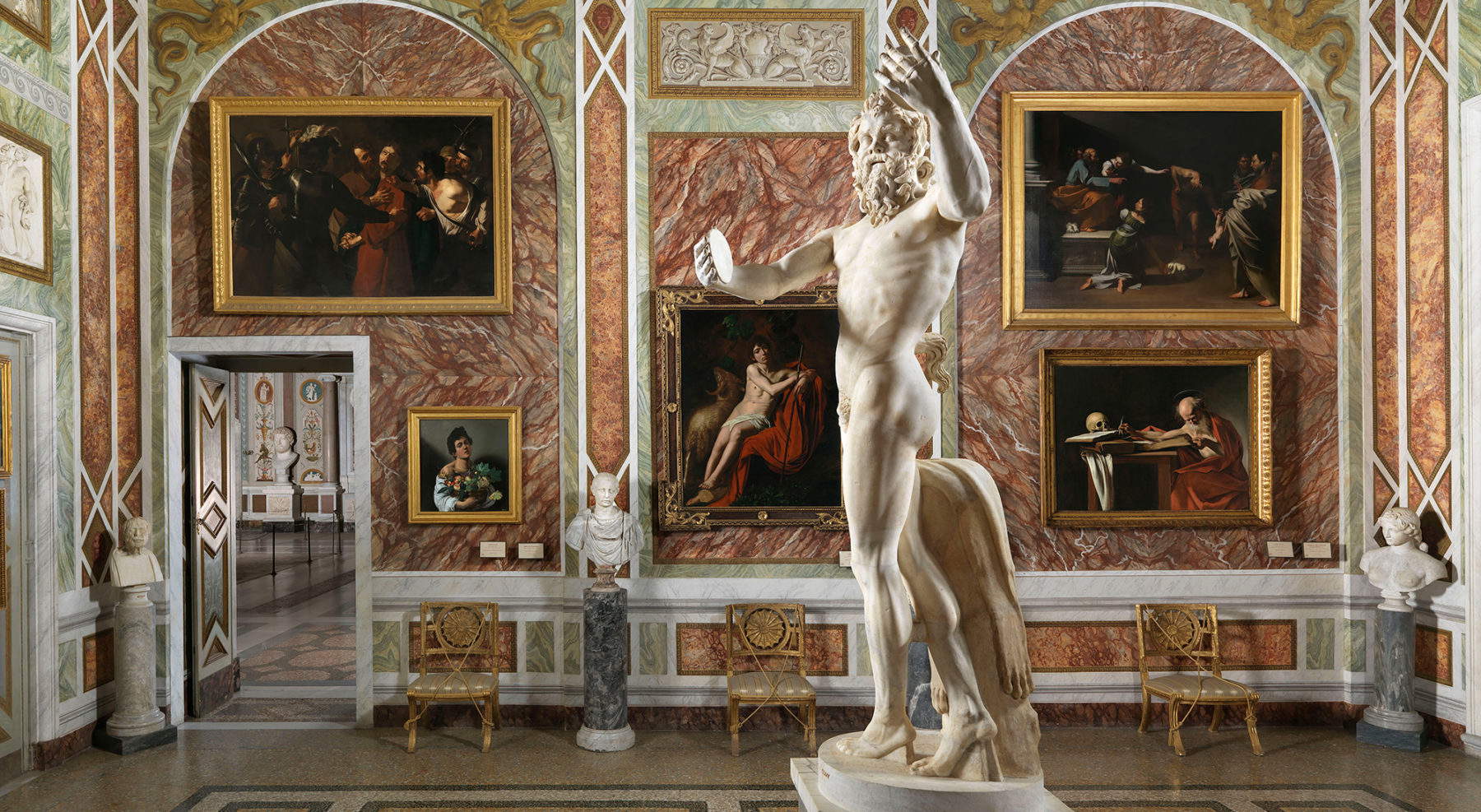
2. The Temple of Aesculapius and the Arch of Septimius Severus.
In the pond inside the Park, in the Giardino del Lago, we find a small island on which a small classical temple dedicated to the god Aesculapius is built. Built between 1785 and 1792 by architects Antonio and Mario Asprucci (father and son) and Cristoforo Unterperger, it is dedicated to the god of medicine: in Ionic style with a portico with four fluted columns and capitals supporting a triangular pediment. The tympanum is decorated with a bas-relief depicting the landing in Rome of a serpent from the temple of Asclepius at Epidaurus. In symbolism the serpent was Aesculapius himself. In the mythological history of Rome, the snake, a sacred animal and symbol of renewal, is said to have landed on Tiber Island, which has since been consecrated to medicine (to this day the island is home to Fatebenefratelli Hospital and the Israelitic Hospital). Inside is a statue of the god inside an aedicule. Externally, on the sides are statues of water lilies and in the medallion busts of Hippocrates and Galen. Originally it was planned to build only a colossal statue of Aesculapius (unearthed at the ruins of the Mausoleum of Augustus) but later the present solution was opted for. The peculiarities of this pond make it a suitable place for lovers who want to take a boat ride to get away from the city while being in the heart of it. A short distance away, to enter the Lake Gardens, is the Settimo Severo Arch, which connects the garden with Madama Letizia Avenue, toward Valle Giulia. The work, dating from 1830, is by Luigi Canina, who was inspired by the Triumphal Arch of Titus in the Roman Forum, but in much smaller size. A statue of Emperor Septimius Severus towers on its summit.
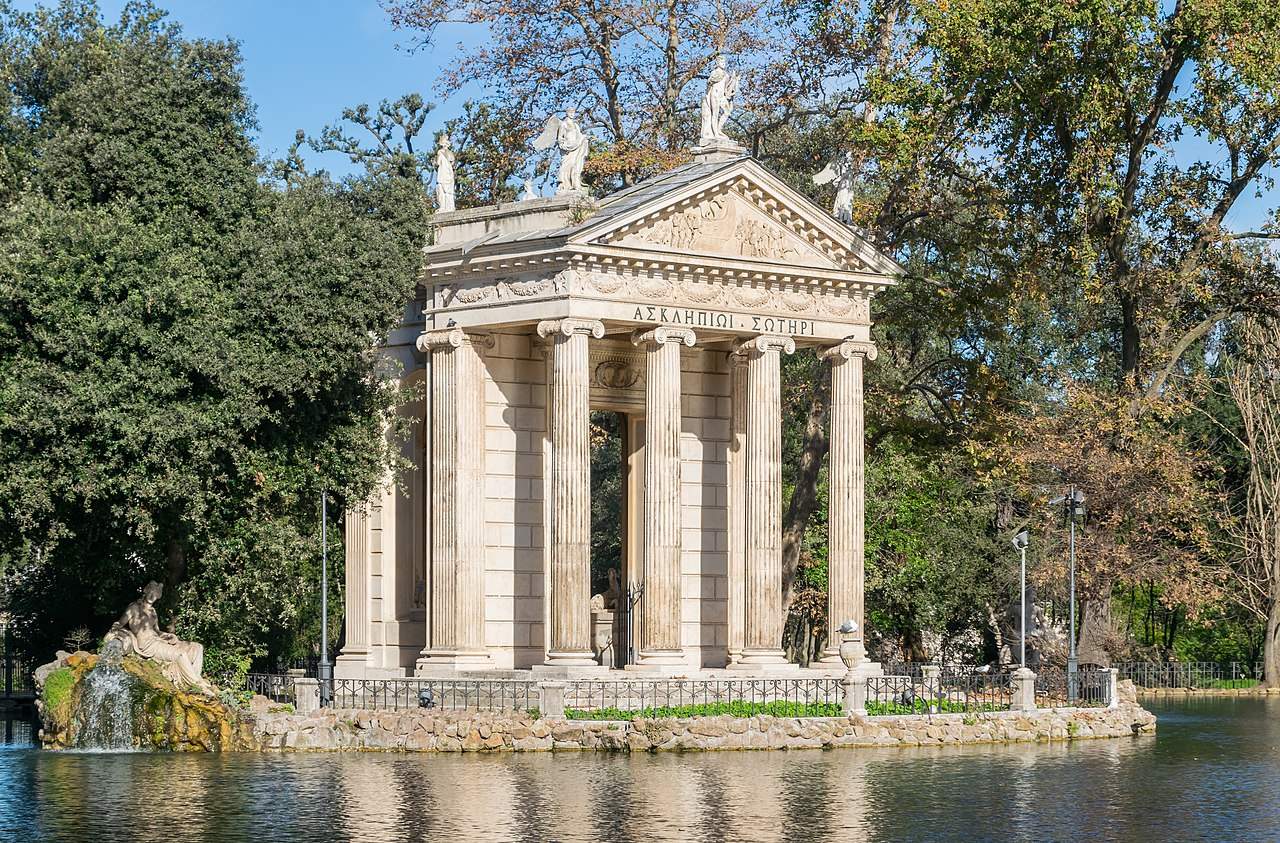
3. The Biopark, the Museum of Zoology and the Valley of the Puppies.
In the northern part of Villa Borghese, about 12 hectares were used to create what is now the Bioparco di Roma (today there are 17): the first Zoological Garden in Italy by German Carl Hagenbeck, which was opened in January 1911. Over time, the concept of Zoos evolved and one step did so with the opening of the one in Rome. The Zoo was a place of attraction and spectacle through the display of exotic animals and animals from distant lands (vacation travel was a rare thing) confined in cages. And already here was the first change: in his design, Hagenbeck sought to do away with the old patterns of cages and bars, giving way to large moats and spaces for the animals to circulate. With the early postwar expansion it became one of the most important in Europe both in terms of wildlife collection and the type of accommodation used. The idea of the zoo evolved with the natural change in sensibility towards animals and with the evolution of a society where leisure travel directly brought people to see animals in their real natural habitats.Thus, the Bioparco was changed and the recreational function was replaced by the educational and scientific one, also with conservation purposes for endangered species. Today the Biopark is home to about 1,200 animals of about 150 species including reptiles, mammals and birds immersed in a very rich and varied setting that also tries to adapt area by area according to the animals present to recreate the creatures’ natural habitat. Also inside is a large area in contemporary times dedicated to dogs, referred to as the Valley of the Puppies. Finally, in front of the Biopark’s monumental entrance is the Museum of Zoology with as many as 5 million preserved specimens, ranging from mollusk shells just a few millimeters in size to a 16-meter-long baleen whale, representing a true archive of “biodiversity.”
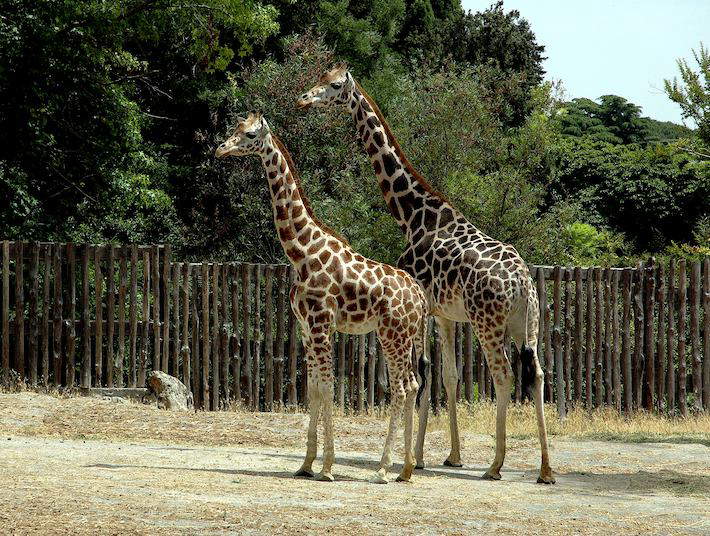
4. The Water Clock
Villa Borghese, in the part of the Pincio overlooking the rooftops of Rome from Piazza del Popolo to Trinità dei Monti, also preserves a masterpiece of hydraulic engineering: a Water-Powered Clock. From an idea of a friar, Giovan Battista Embriaco, in 1867, the clock was made by the Granaglia brothers (who had a clock factory in Turin) and installed in the middle of a small artificial pond in the Pincio in 1873. The clock is set in a fountain and is supported by a cast-iron structure, four meters high, made and decorated like wooden poles. It is enclosed on all four sides with glass in order to show the mechanism and is operated only by hydraulic force: “The clock works by the presence of water falling from above and filling two elongated basins in the shape of leaves (similar to two plates of a scale), balanced on a pivot. The two basins swinging activate the mechanism that turns the hands, thus marking the time. The flow of water also moves the pendulum and winds the chime.”
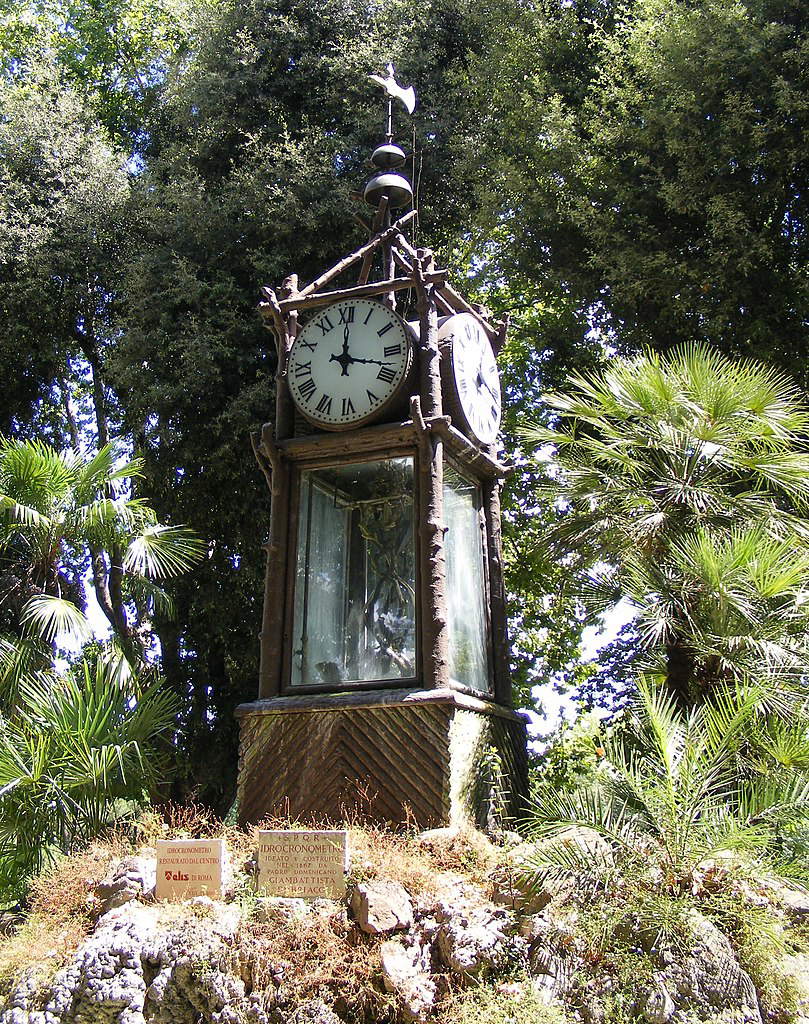
5. The Carlo Bilotti Museum
The museum is inside the old Aranceria and since 2006 has been dedicated to contemporary art and named after its patron, an Italian-American businessman who first poured his collection into it, an art lover who also became friends with the artists he knew who would later lead to commissioned works. Among the works featured are pieces by Giorgio de Chirico, Andy Warhol, Larry Rivers, Gino Severini, and Giacomo Manzù. Of the Pop Art icon there is a portrait of Bilotti’s wife and daughter, a rare occasion when Warhol draws two subjects in a single canvas.
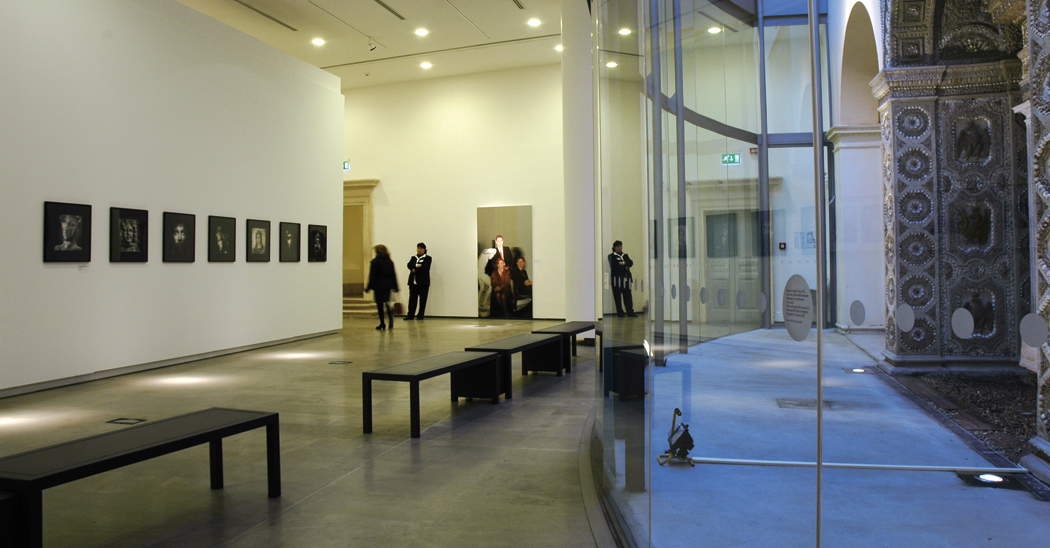
6. The Casina del Lago
Near the Carlo Biliotti Museum is a small chalet dating back to the 1920s, called the Lake Casina by everyone. It currently serves as the cafeteria of the Carlo Bilotti Museum, following the same opening hours. It is one of Villa Borghese’s busiest and most atmospheric places, and it is nice to sip coffee among its outdoor tables, inside an important piece of the park’s history.
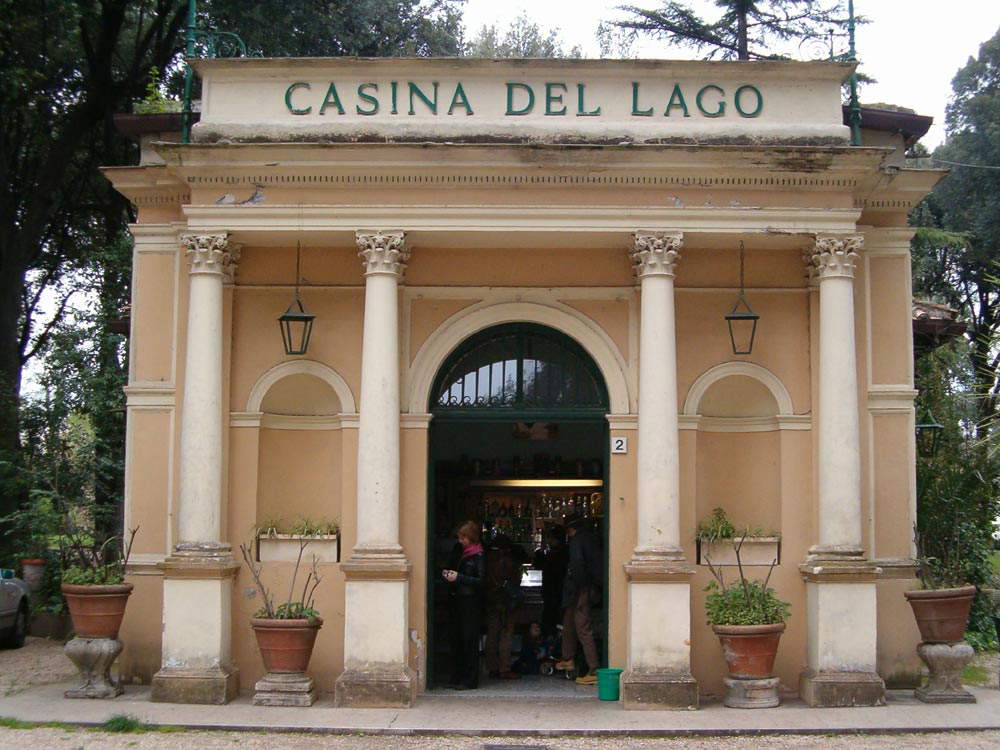
7. The fountains
One cannot talk about the Villa Borghese Park without mentioning its countless fountains (about sixty fountains and cooling fountains), some of them very famous. First and foremost is the Fountain of the Sea Horses: designed by Cristoforo Unterperger and built by Vincenzo Pacetti in the late eighteenth century, it consists of a circular basin supported by four winged horses whose bodies end up like that of a fish, inside of which rises another small basin from which in turn rises a silver chalice from which water gushes. The structure of the 4 seahorses rests on an even larger basin dug into the ground. Again, Giovanni Nicolini’s Fonte Gaia in the Garden of the Lake is also known as the Fountain of the Satyrs because of its shape: a bronze sculptural group (on a cylindrical travertine base) depicting two satyrs (a woman and a half-animal man) holding their baby on their outstretched arms. On the avenue of the Borghese Museum, what used to be called the “Round Fountain” and “Oval Fountain” are now called the Dark Fountains because of the darkness that covers them caused by the shade of the trees around them. Then on Viale dei Pupazzi is the namesake fountain of late 18th-century origin, which had a group of putti and dolphins (stolen in the 1980s). The granite basin could be a reuse of the Narcissus Fountain near the Casino Nobile. But the list is long and each of them is a work of art: there is the Fountain of Aesculapius in Piazzale del Fiocco, the Fountain of Silenus in Viale dei Daini, the Fountain of Venus in Piazzale Scipione Borghese, in Viale delle Belle Arti there is the Fountain of Turtles made for the Universal Exhibition, and many others.
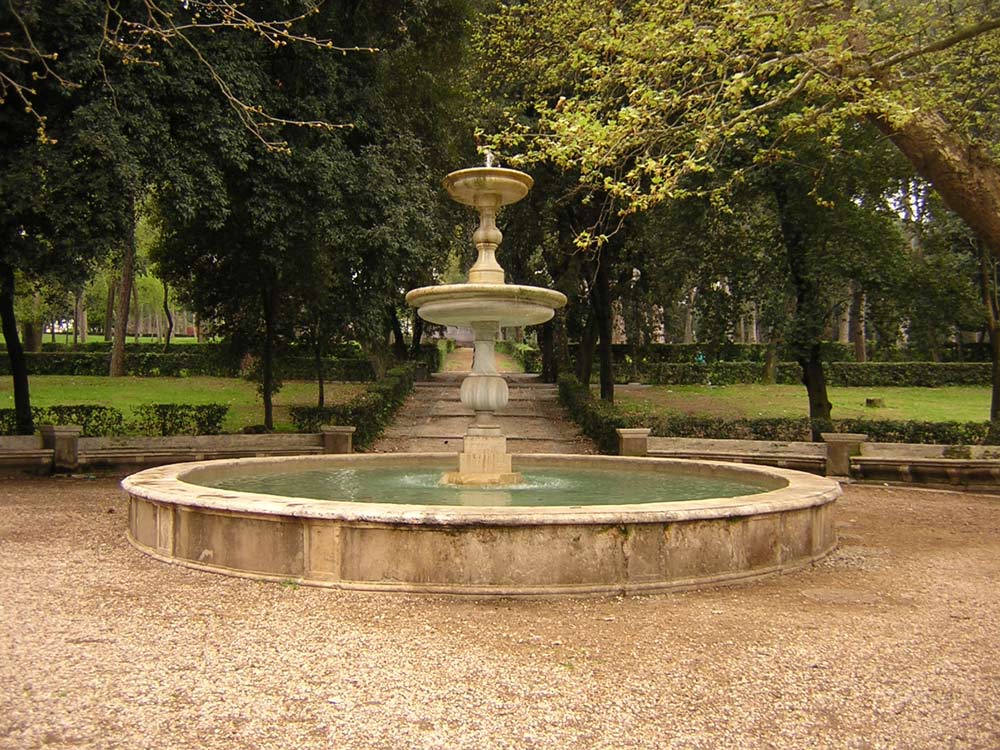
8. The Casino of the Sundial
At the end of the Borghese Gallery’s “Secret Gardens,” which can be visited during the special openings to which they are sometimes subject, we find the Casino della Meridiana, which takes its name from its sundial. The main facade is richly decorated with marble and stucco. A large portal leads into a central gallery with frescoed walls and a mosaic floor. It is the second farmhouse in the Secret Gardens and is very similar to the first one, that of the Uccelliera. They are located within another very important green spot of the Villa: gardens with many species of flowers, including rare ones, designed according to the most fashionable trends in Europe at that time.
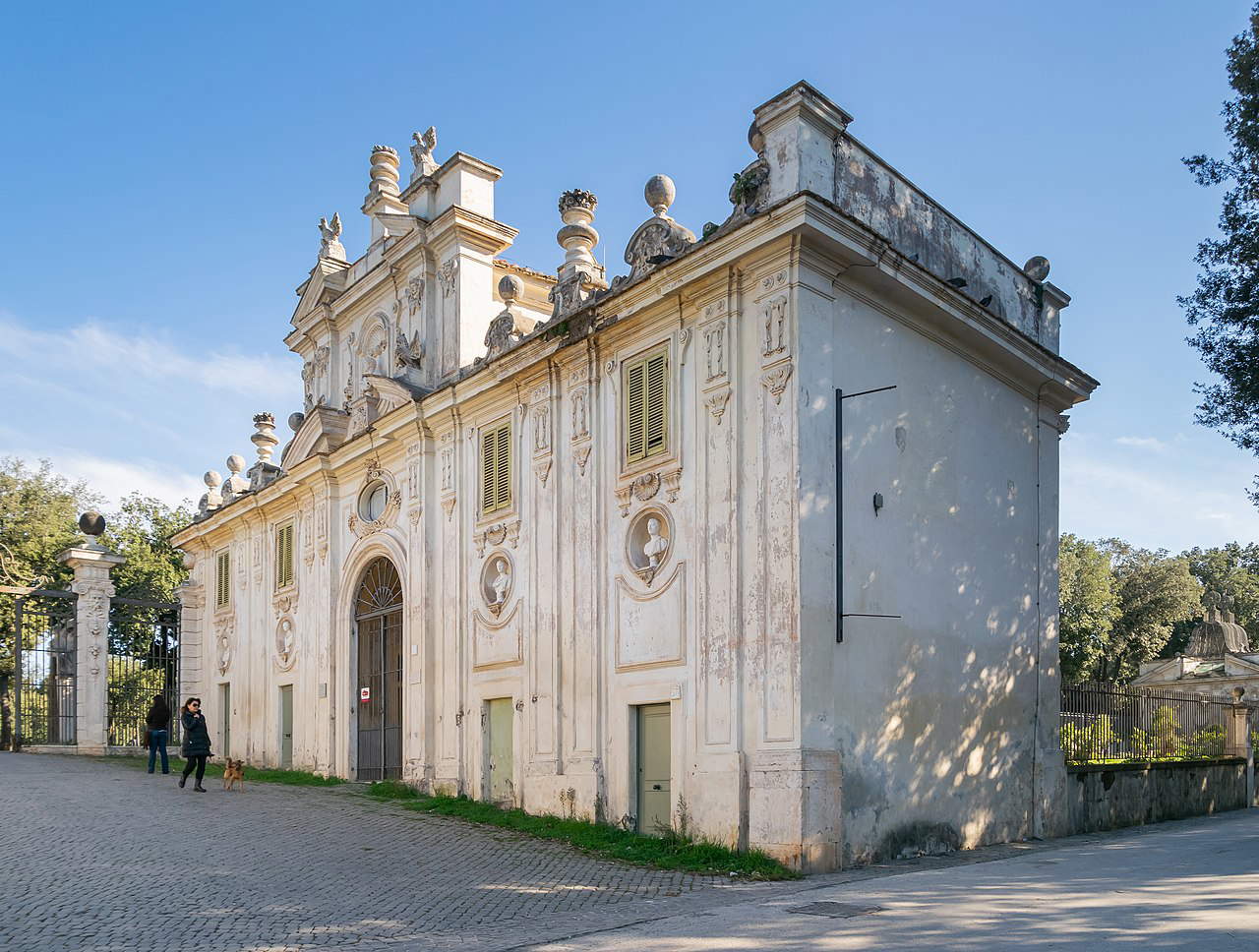
9. Sienna Square
The Borghese family, as mentioned, were originally from Siena and therefore decided to dedicate a square in the vast Park of their property. A place that would celebrate its origins also in its functions: inspired by Piazza del Campo, it was to be the scene of events and festivals. And it was precisely in the odor of the Palio that this space was deputed from 1926 to host an international horse competition that has been held here ever since, identifying itself with the name of the Piazza: today, the Piazza di Siena competition is considered among the most prestigious in the world.
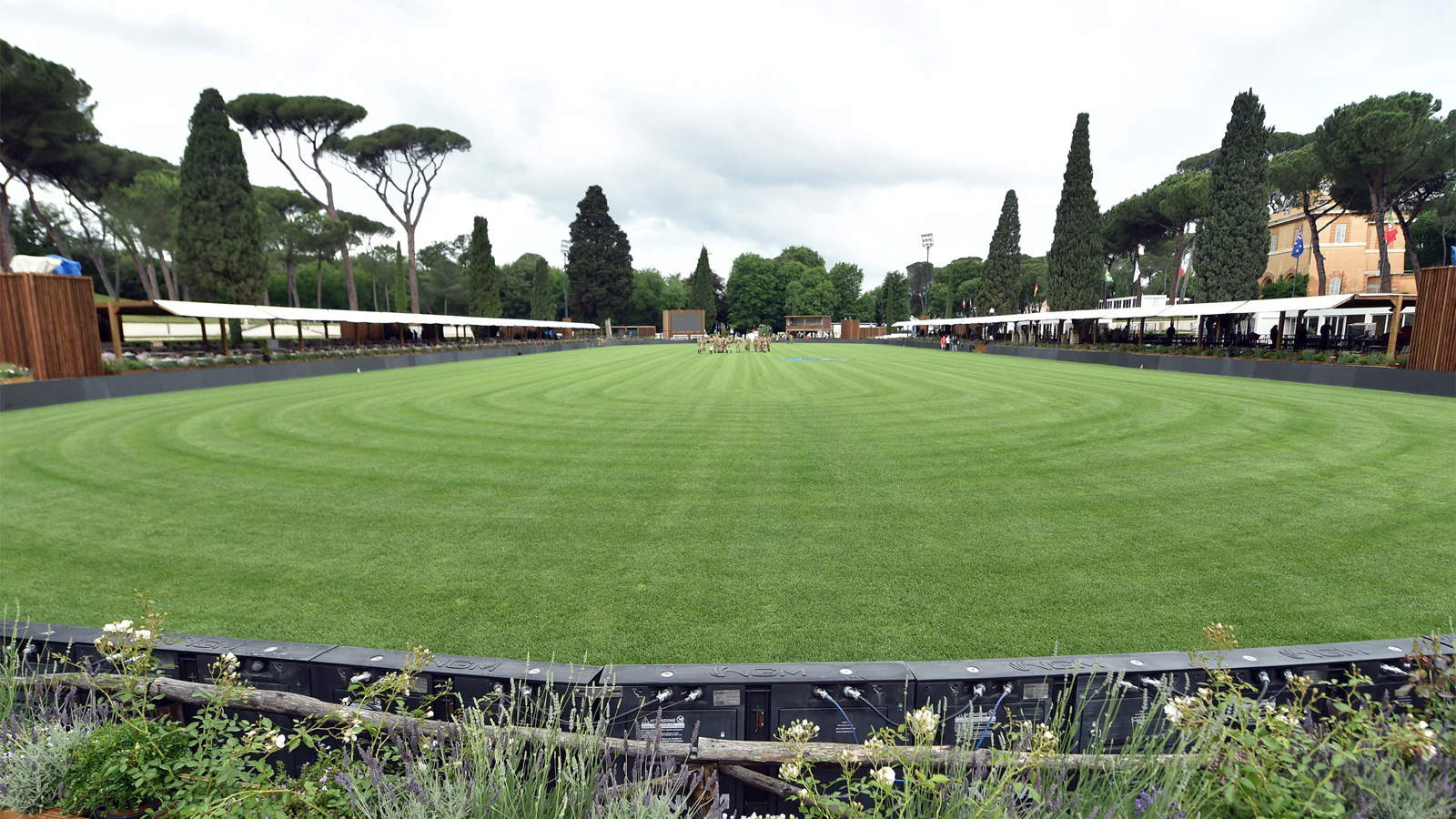
10. Pietro Canonica Museum
What was once called “la Fortezzuola” is now the home-museum of artist Pietro Canonica. The sculptor spent many years of his life here, in fact, until his death in 1959, and in addition to his works, therefore, the Pietro Canonica Museum is filled with his tools and work and personal items. The house-museum is full of works and drafts: from marbles to bronzes, originals and copies, to sketches and prototypes. An immersion in the era experienced by the artist himself that makes one appreciate each work with the perspective of the time. It is a small museum but full of suggestions accumulated over 37 years that allow a journey between the 19th and 20th centuries. It is what can be called a perfect example of the museographic model of artist’s houses, of rare occurrence in Italy. The visit can also be a didactic journey of the artist’s evolution over time and ability to execute with techniques and materials.
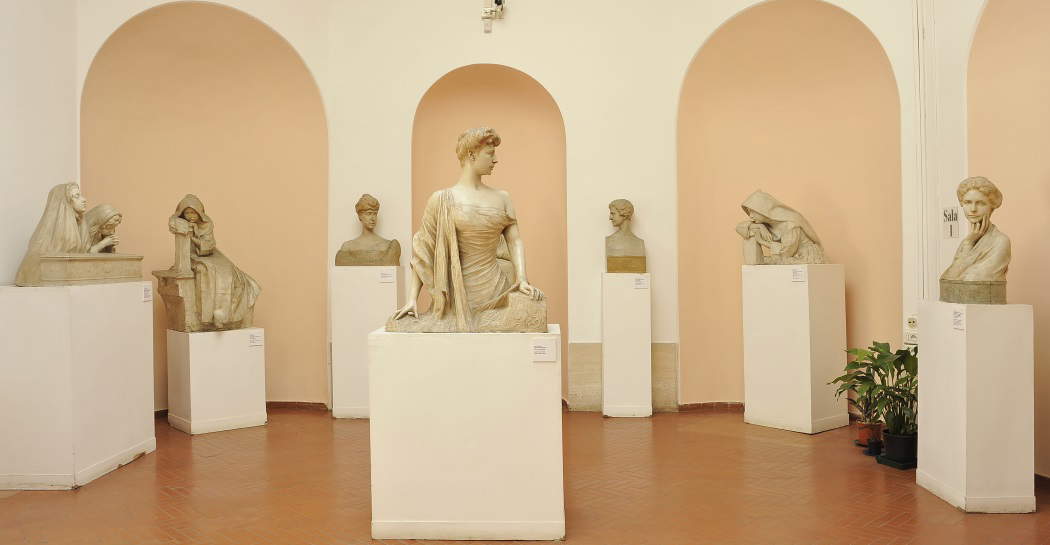
 |
| Villa Borghese, what to see: 10 stops in the green heart of Rome |
Warning: the translation into English of the original Italian article was created using automatic tools. We undertake to review all articles, but we do not guarantee the total absence of inaccuracies in the translation due to the program. You can find the original by clicking on the ITA button. If you find any mistake,please contact us.



























